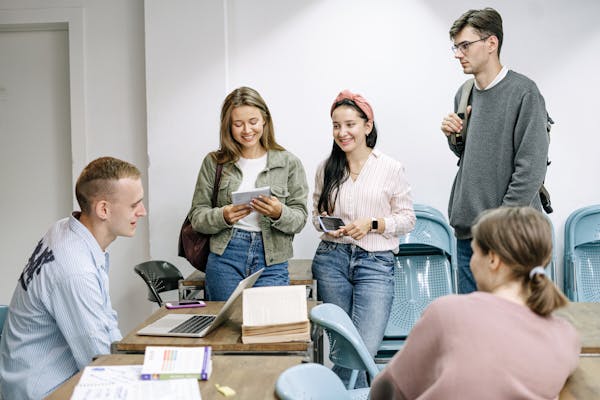
Creating a Better Team Project Experience
Aiden SabaterExploring the dynamics of group projects and its importance within the workplace
Every college student will be assigned to a team project. Each student’s experience varies when it comes to these team projects. Some leave the course with new friends, while others regret the group they were a part of. Practicing how to collaborate with people properly is not only helpful in school, but also helpful in their careers. Students must learn to work together as a team before they join the workforce. Having a framework for team projects will supply students with structure and guide them to success.
There are several tips that educators might want to consider when creating team projects. First, allow students to choose their group members. It may be easier for the professor to assign groups randomly. However, students are more likely to have a better experience when the group is self-assigned. If students are unfamiliar with their peers, an excellent way for introductions would be through discussion boards, video self-introductions, or speed breakout groups. Speed breakout groups allow students to talk with a small group of classmates to gauge their interest in classwork before meeting the rest of their peers. This will enable members not to feel like they have a random classmate in their group, but instead an acquaintance. Once groups have their assigned members, a great way to keep everyone accountable is through team contracts. The team contract can facilitate the agreement for regular meeting times, how to resolve conflicts, and assign team roles. Forming a scheduled meeting time within the team contract is a way to set aside time for the assignment. Learning how to resolve conflicts and reduce escalation is integral to learning and becoming an adult. It is essential to discuss how to resolve disputes within the team contract. The last resort would be to contact the professor about team conflicts.
A crucial component of the framework of team projects is periodic check-ins. Team leaders can choose time slots with the professor to discuss the team’s progress and expand on any issues they have come across. The professor can also offer team leader check-ins as groups. Allowing team leaders to hear the other teams’ struggles and learn from them. Team leaders can then provide each other with further encouragement and support.
Retrospectives are an excellent way to gather insight into the team. A typical retrospective activity includes what went well and what could have been better. Students will discuss their perspective on the team and their progress. The following example is the 4L (Liked-Learned-Lacked-Longed For) framework for the team members to voice their thoughts about their teamwork. Retrospectives create a space for the group to talk about individual and team weaknesses and strengths while making a call to action on how to improve. This is a great way to learn to embrace critiques and how to improve upon them.
The opportunity for peer evaluations for group work allows students to critique their peers professionally. From the students’ standpoint, they can discuss and rate their peers. Were your team members completing their parts on time? Were your team members’ contributions meaningful? It is crucial to learn how to evaluate others’ work properly. Peer evaluations often happen within the workplace, so it is vital to obtain these skills beforehand. Team projects may not be everybody’s favorite assignment. Group assignments are a great way to meet new peers and discuss the class content with them. With a framework enforced in team projects, they can go smoothly and can become enjoyable. It is essential to learn how to collaborate properly.
 What Students Miss from Online Learning
What Students Miss from Online Learning
 Engaging Students on the First Day and Every Day
Engaging Students on the First Day and Every Day